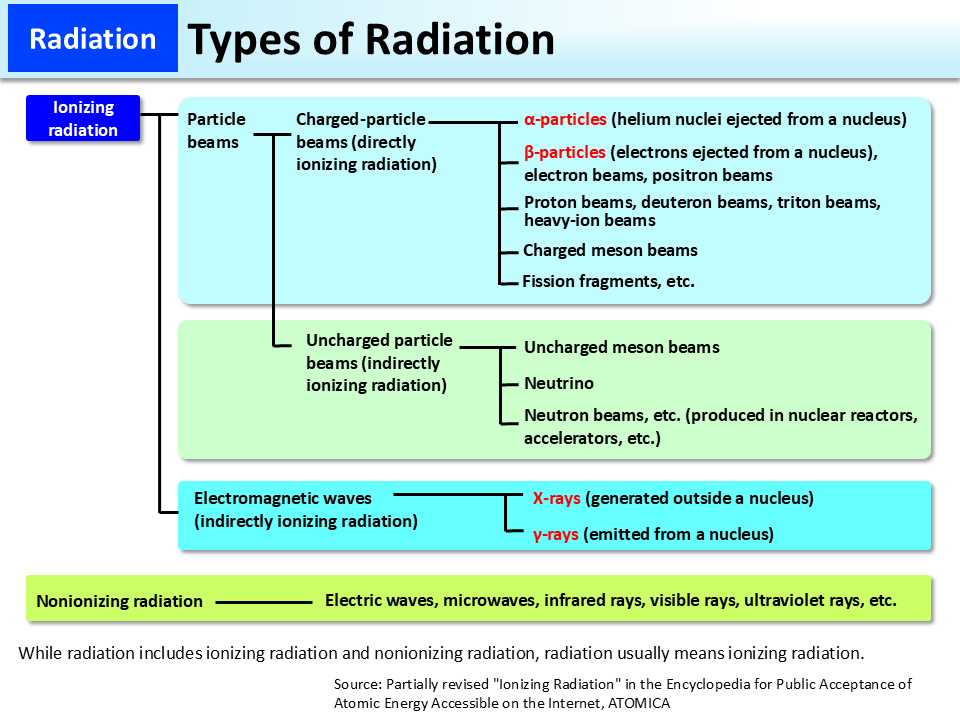Types of Radiation
Radiation generally means ionizing radiation. Ionizing radiation, which has the ability to ionize atoms that make up a substance (separate the atoms into positively charged ions and negatively charged electrons), is categorized into particle beams and electromagnetic waves.
Particle beams include α (alpha)-particles, β (beta)-particles, neutron beams, etc. (p.13 of Vol. 1, “Where does Radiation Come from?”). Particle beams include charged (ionized) particle beams and uncharged particle beams. γ (gamma)-rays and X-rays are types of electromagnetic waves.
Some forms of electromagnetic waves, such as electric waves, infrared rays, and visible rays, do not cause ionization, and they are called nonionizing radiation. Ultraviolet rays are generally categorized as nonionizing radiation although some ultraviolet rays do cause ionization (p.15 of Vol. 1, “Types of Ionizing Radiation”).
(Related to p.19 of Vol. 1, “Types of Radiation and Biological Effects,” and p.20 of Vol. 1, “Penetrating Power of Radiation”)
- Included in this reference material on March 31, 2013
- Updated on March 31, 2019

